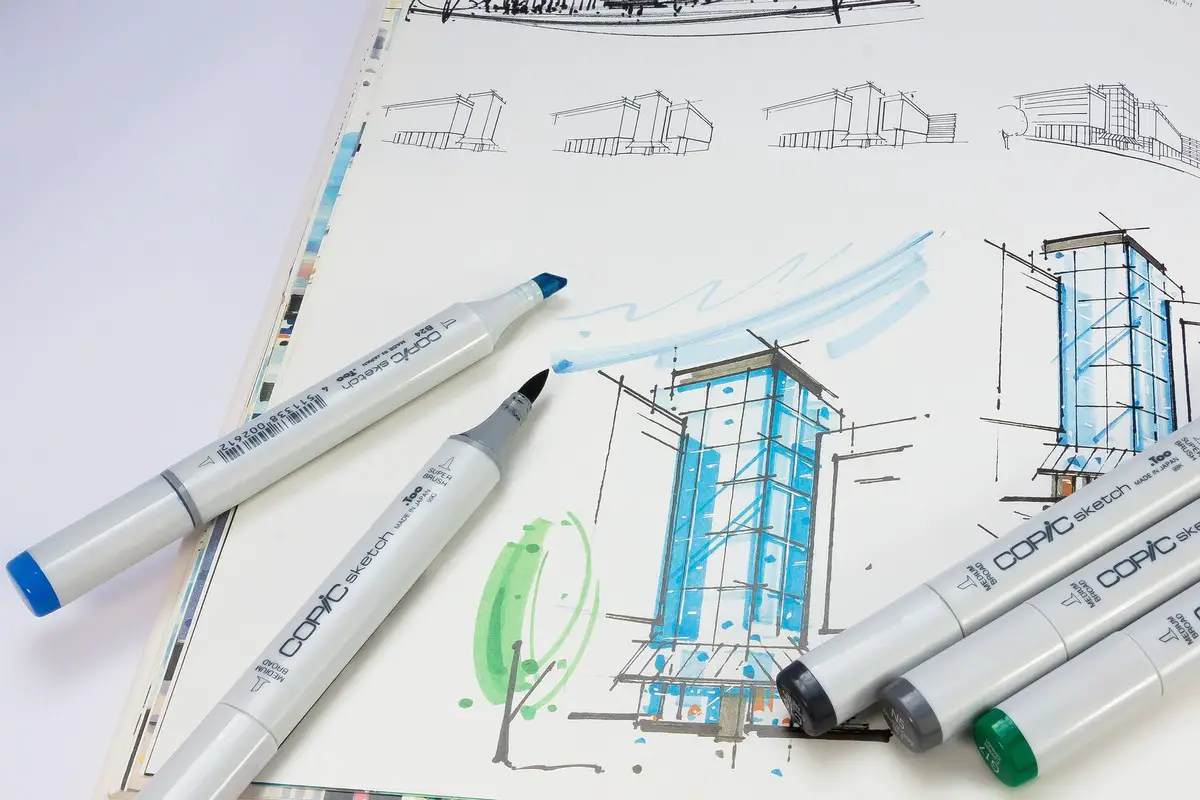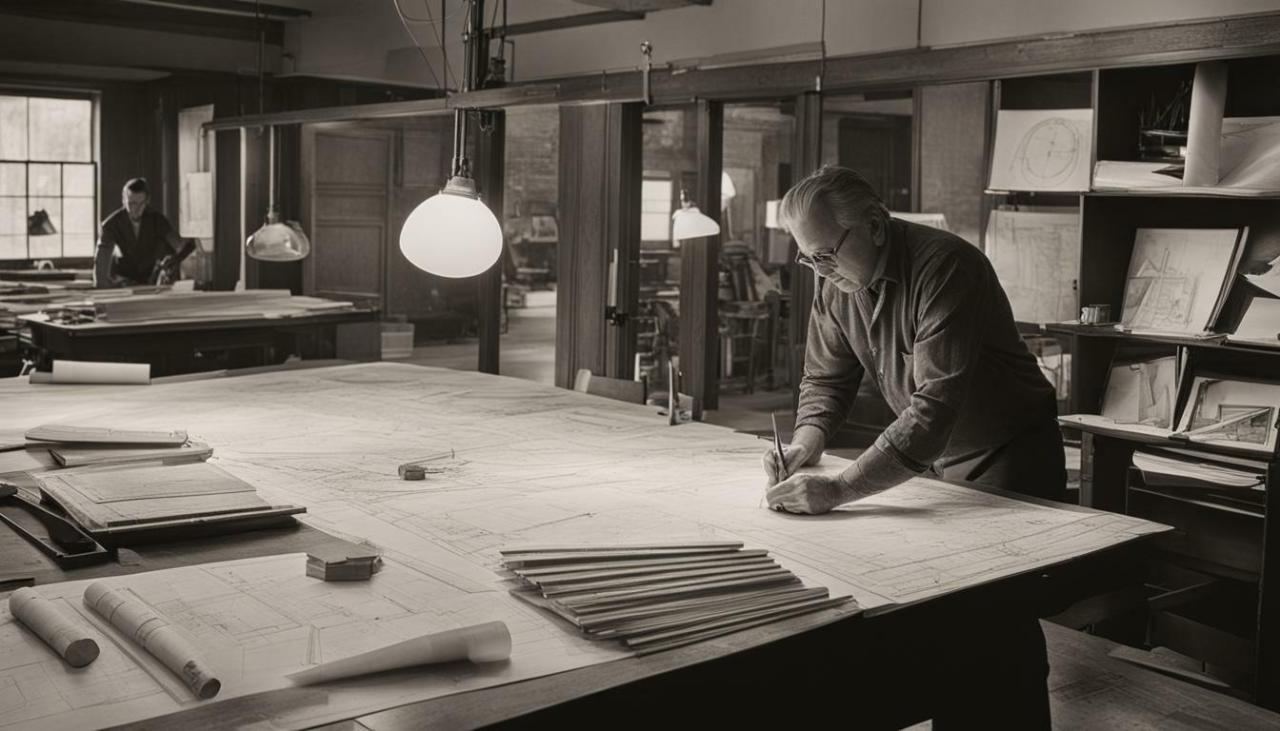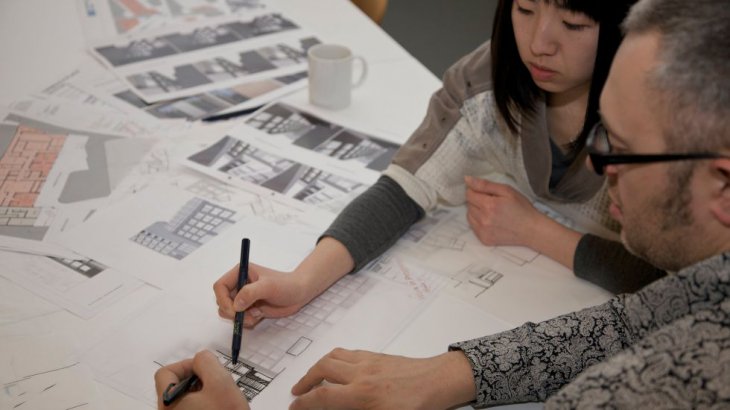Educational Pathways

Pursuing a career as an architect requires a structured educational journey. This involves a blend of theoretical knowledge, practical skills, and hands-on experience. The path typically begins with undergraduate studies and often continues with graduate-level programs, leading to a professional license.
Architectural education encompasses a broad spectrum of specializations, from traditional design principles to innovative sustainable practices and advanced technology applications. Understanding the diverse program types and their durations is crucial for aspiring architects to choose the path best suited to their career aspirations.
Bachelor’s Degree Programs
Bachelor of Architecture (BArch) programs are the foundational step in an architectural career. These programs provide a comprehensive overview of architectural design principles, history, and theory. Students learn fundamental design skills, including sketching, modeling, and rendering. They also gain exposure to building codes, construction methods, and project management. These programs typically last four years, equipping graduates with the foundational knowledge needed to enter the profession.
Master’s Degree Programs
Master of Architecture (MArch) programs build upon the foundation laid by the undergraduate degree. They offer a more specialized and in-depth study of architectural design, allowing students to focus on particular areas of interest, such as sustainable design, urban planning, or historical preservation. MArch programs often include studio-based projects, research opportunities, and specialized seminars, depending on the focus area. These programs typically last two years.
Doctoral Degree Programs
Doctor of Philosophy (PhD) in Architecture programs are designed for those seeking advanced research and academic careers. These programs are geared toward in-depth study, research, and original contributions to the field. The focus is on critical analysis, theoretical development, and scholarly publications. They typically require several years of study and research, culminating in a dissertation.
Program Types
Architectural programs come in various types, each offering a unique approach to design and construction.
- Traditional programs focus on the fundamental principles of architecture, emphasizing design, construction, and historical context. These programs often have a longer duration compared to other specializations.
- Design-build programs integrate design and construction processes, offering students practical experience in project management, cost estimation, and construction techniques. This approach is usually offered at the Master’s level and typically takes a shorter duration.
- Sustainable programs emphasize environmentally responsible design and construction, incorporating energy efficiency, resource conservation, and ecological principles into the design process. These programs are typically at the Master’s level and are often shorter than traditional programs, with an emphasis on rapid skill acquisition.
Program Duration Comparison
The table below provides a general overview of the approximate duration for various architectural programs. Note that these are estimations and may vary depending on the specific program and institution.
| Program Type | Degree Level | Approximate Duration (years) |
|---|---|---|
| Traditional | Bachelor’s | 4 |
| Design-Build | Master’s | 2 |
| Sustainable | Master’s | 2 |
Practical Experience

Gaining practical experience is crucial for aspiring architects. It bridges the gap between theoretical knowledge and real-world application, providing invaluable insights into the profession’s intricacies. This hands-on experience allows individuals to refine their skills, develop professional networks, and understand the diverse facets of architectural practice.
Practical experience, in its various forms, is a cornerstone of professional development. Exposure to different project types, client interactions, and team dynamics is essential for success. This multifaceted experience is often what distinguishes a promising candidate from the rest.
Importance of Internships
Internships are a fundamental stepping stone for aspiring architects. They provide opportunities to apply theoretical knowledge in a practical setting, work alongside experienced professionals, and gain exposure to diverse projects. Internships offer valuable experience, often providing a pathway to full-time employment. Learning from experienced architects is a major benefit.
Types of Practical Experience
Several avenues offer practical experience, each with its own benefits. Internships, apprenticeships, and co-op programs are prominent examples, each providing a different level of immersion and learning.
- Internships: These often involve assisting architects on projects, gaining familiarity with design software, and learning about project management. They can range from short-term projects to longer, more comprehensive placements.
- Apprenticeships: These programs typically involve a structured learning process under the guidance of a master architect. Apprenticeships are more focused on skill development and often involve a longer commitment.
- Co-op Programs: Combining academic study with professional work experience, co-op programs provide a structured balance between theoretical learning and practical application. This experience allows for skill refinement and career exploration.
Comparing Internship Opportunities
Different internship opportunities cater to various needs and career aspirations. The choice of internship should align with the individual’s goals and learning preferences.
- Firm-specific internships: These internships offer the opportunity to work on projects relevant to the firm’s specialty. This direct exposure to the firm’s design approach is advantageous.
- University-affiliated internships: These internships often involve working on projects that align with university research or curriculum, offering opportunities to collaborate with fellow students and faculty. Learning from diverse experiences is a key advantage.
- Small-firm internships: Working in a smaller firm can offer a more intimate understanding of the design process. Individuals gain direct exposure to all stages of a project.
- Large-firm internships: Exposure to large-scale projects and diverse teams is a key advantage of large-firm internships. Individuals gain experience with complex projects and various project phases.
Entry-Level Architecture Roles
Entry-level positions provide a crucial stepping stone to more senior roles. Understanding the time commitment associated with each role is essential.
| Role | Approximate Time Commitment (hours/week) |
|---|---|
| Intern | 20-30 |
| Junior Architect | 40-50 |
| Assistant Architect | 40-50 |
Licensing and Registration

Becoming a licensed architect requires navigating a specific set of regulations in each region. These regulations vary significantly, impacting the pathway to professional practice. Understanding these requirements is crucial for aspiring architects.
Licensing Requirements in Different Regions, How long does it take to become an architect
Licensing requirements for architects vary significantly across the globe. Each jurisdiction has its own set of criteria for obtaining a professional license. These criteria often include educational qualifications, passing specific examinations, and practical experience. This section will detail some common requirements.
Licensing Examinations
The licensing examination is a critical step in the process. The examination assesses the candidate’s knowledge and understanding of architectural principles, design, and related fields. Different regions have distinct examination bodies, such as the ARE (Architecture Registration Examination) in the USA and the RIBA (Royal Institute of British Architects) in the UK. These examinations are designed to ensure a minimum competency level for practicing architects.
Process of Obtaining a License
The process of obtaining an architectural license typically involves several steps. These steps often include completing a formal application, submitting necessary documentation, meeting experience requirements, and passing the required examination. The specific requirements for each jurisdiction can vary, so it is essential to research and understand the precise process within the region of interest. Thorough preparation and meticulous attention to detail are essential for successful completion.
Timeframe for Completing the Licensing Process
The time required to complete the licensing process varies depending on several factors, including the candidate’s preparation, the complexity of the examination, and the specific requirements of the jurisdiction. While some regions may allow for quicker licensing processes, others might demand more time. The table below offers a general overview of the typical timeframes.
| Region | Licensing Examination | Time to Completion (months) |
|---|---|---|
| USA | ARE (Architecture Registration Examination) | 12-18 |
| UK | RIBA (Royal Institute of British Architects) | 12-18 |
Career Advancement

How long does it take to become an architect – After successfully navigating the educational and licensing stages, architects embark on a career path that often involves continuous learning and professional development. Career advancement within architecture hinges on factors such as experience, specialization, and networking. Understanding the various career paths and potential salary progressions is crucial for architects aiming to grow professionally.
Different Career Paths in Architecture
The architecture profession offers a diverse range of career paths, catering to different interests and skill sets. From designing residential homes to leading complex commercial projects, architects can find fulfilling roles that align with their aspirations.
Experience and Specialization in Career Progression
Experience significantly impacts an architect’s career trajectory. Early-career architects often start with entry-level roles, gaining practical experience and building a portfolio. As experience accumulates, architects can transition to more senior positions with greater responsibility. Specialization plays a critical role in career advancement. Architects specializing in specific areas, such as sustainable design or historic preservation, often find opportunities in firms or projects focused on those areas.
Potential Salary Progression
Salary progression for architects is influenced by several factors, including experience, specialization, and location. Entry-level architects typically earn less than senior architects with extensive experience. Furthermore, architects in high-cost-of-living areas generally earn higher salaries compared to those in less expensive regions. The salary difference between different specializations is also notable. For instance, architects specializing in high-profile commercial projects may command higher salaries than those focusing on residential projects. Data from various industry reports shows a consistent upward trend in salary with increasing experience.
Architectural Specializations and Career Paths
| Specialization | Career Paths |
|---|---|
| Residential | Senior Architect, Project Manager, Firm Owner |
| Commercial | Design Lead, Project Architect, Principal |
| Industrial | Plant Designer, Design Manager, Senior Project Manager |
| Sustainable Design | Sustainability Consultant, LEED AP, Design Lead |
| Urban Design | Urban Planner, City Planner, Principal |
The table above illustrates a few common architectural specializations and their corresponding career paths. It’s important to note that these are not exhaustive, and numerous other specializations and career paths exist within the broader architecture field.
Individual Factors

The journey to becoming an architect is not a one-size-fits-all path. Individual differences in learning styles, aptitudes, and prior knowledge significantly impact the time required for successful completion of architectural education and licensure. These factors, alongside personal goals and aspirations, create a diverse spectrum of experiences among aspiring architects.
Individual learning styles and aptitudes play a crucial role in the efficiency of architectural education. Some students excel in visual learning, thriving on the spatial reasoning demanded by design tasks. Others may prefer hands-on experience, finding practical application and experimentation more effective. Recognizing and leveraging one’s preferred learning style can greatly expedite the learning process.
Learning Styles and Aptitudes
Different learning styles influence how quickly an individual grasps complex architectural concepts. Visual learners, for instance, may benefit from extensive use of architectural models and digital design software. Kinesthetic learners might find value in hands-on construction projects or workshops. Similarly, varying aptitudes in spatial reasoning, mathematics, and communication skills can affect the pace of learning. A student with a strong foundation in mathematics might find the calculations associated with structural design easier to master, thus potentially accelerating their progress.
Prior Knowledge in Design or Construction
Individuals with pre-existing knowledge in design or construction often find the transition into formal architectural education smoother. For example, someone with experience in interior design might already possess a foundational understanding of space planning and aesthetics, potentially allowing them to focus on more specialized architectural aspects. Similarly, prior experience in construction can provide valuable insights into practical application and the interplay between design and execution. Conversely, students without prior experience may need more time to develop a comprehensive understanding of design principles and construction techniques.
Approaches to Learning
Diverse approaches to learning can impact the time needed to become an architect. Some students might prefer a structured, traditional classroom environment, while others might thrive in self-directed learning through independent research or project-based learning. Active participation in extracurricular activities like design competitions or volunteer work can supplement formal education and provide a richer learning experience, potentially shortening the overall time. A balanced approach that combines different methods is often the most effective.
Personal Goals and Aspirations
Personal goals and aspirations significantly influence the time taken to become an architect. An individual focused solely on completing the necessary coursework and obtaining a license might progress quickly. Conversely, someone seeking to specialize in a particular architectural niche (e.g., sustainable design, historical preservation) might need more time to develop the necessary skills and knowledge. Personal ambitions regarding the type and scale of projects one desires to undertake will also affect the path taken. For example, a student aiming to design large-scale public projects will need to develop a wider skill set than one aiming to focus on smaller-scale residential projects.
External Factors: How Long Does It Take To Become An Architect

External factors play a significant role in shaping the architectural career path. Economic fluctuations, technological advancements, and local regulations all influence the demand for architects, the required skillsets, and the overall timeline for career progression. Understanding these factors is crucial for aspiring architects to make informed decisions and navigate the profession effectively.
Impact of Economic Conditions
Economic downturns often correlate with reduced construction activity and subsequently lower demand for architects. Conversely, periods of economic growth typically see increased building projects, creating a greater need for architectural services. For instance, during the 2008 financial crisis, many architectural firms experienced significant project reductions and layoffs. Conversely, periods of economic expansion, like the mid-2010s, witnessed a surge in new construction projects, creating opportunities for architects and increasing competition for talent.
Influence of Technological Advancements
Technological advancements are constantly reshaping the architectural profession. Software tools for design, modeling, and visualization are becoming increasingly sophisticated. This necessitates continuous learning and adaptation for architects to remain competitive. BIM (Building Information Modeling) software, for example, has revolutionized the design and construction process, requiring architects to develop new skills in digital modeling and collaboration. The time needed to adapt to these advancements varies depending on the individual’s learning pace and existing skill set. Those with strong digital literacy will adapt faster than those who are less familiar with technology.
Effect of Local Regulations and Policies
Local regulations and policies, such as zoning laws and building codes, significantly impact the architectural design process and the time it takes to become a licensed architect. These regulations can vary greatly depending on the region. For instance, obtaining necessary permits and approvals can be a time-consuming process in areas with stringent building codes. Some regions may have specific requirements for architectural licenses, such as passing additional exams or completing specialized training. Consequently, the timeline for licensing may vary from location to location, adding complexity to the career path.
Examples of External Factors’ Impact
External factors can significantly influence the time required to pursue an architectural career. A severe economic downturn can lead to extended periods of job searching and potentially limit opportunities for gaining necessary practical experience. Conversely, a region with rapid economic growth might offer more architectural projects, potentially shortening the time to gain practical experience and licensing. Similarly, the introduction of new software or regulations may influence the time needed for training and adaptation, impacting the overall career trajectory.
Commonly Asked Questions
What are the typical entry-level roles in architecture, and how long do they usually last?
Entry-level roles often include internships, junior architect positions, and assistant architect positions. The duration of these roles can vary significantly depending on the firm and the individual’s progress.
How do economic conditions affect the demand for architects?
Economic downturns can lead to reduced demand for architects, impacting job availability. Conversely, periods of growth in construction and development often increase demand.
What are the differences between a Bachelor’s, Master’s, and Doctoral program in architecture?
Bachelor’s degrees provide foundational knowledge, Master’s degrees often specialize in specific areas, and doctoral programs typically focus on advanced research and specialization, potentially leading to academic or specialized practice roles.
How do technological advancements impact the field of architecture?
Technological advancements constantly reshape the architectural profession. Architects need to adapt and learn new tools and software to stay current and competitive.